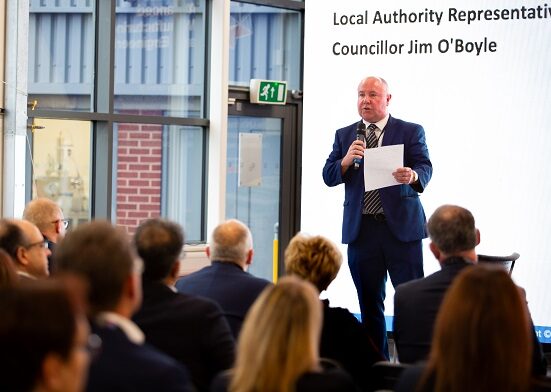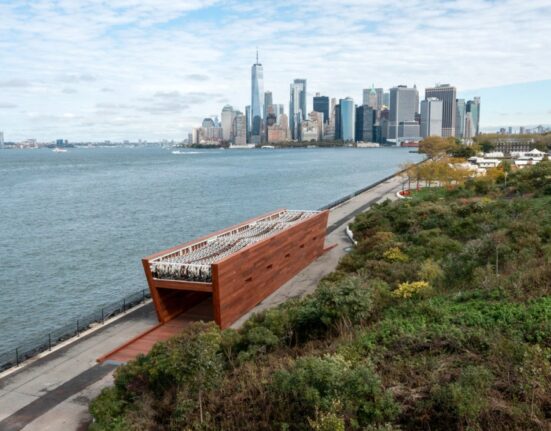By his reckoning, Jorge Pérez may have lost more money than anyone in the 2008 financial crisis. The founder of the Related Group, Florida’s largest property developer, watched $3bn in condominium sales evaporate as buyers walked away from towers that would become emblems of the property crisis. To make matters worse, as Pérez was haggling with lenders over some $2.5bn in debts, doctors discovered a golf-ball-sized tumour in his pancreas that would require 11 hours of surgery.
“It changed me completely,” Pérez, 74, says of those days. “You go through 30 years of thinking you’re the hottest thing in the world. I mean, lenders would bring their private jets to take me to their board meetings. They would fight and fight and fight to give me my next loan.”
Pérez is now restored to health. So, too, is Related. It has not only reclaimed its standing as the dominant force in Florida real estate but also expanded across the American sunbelt — from Phoenix to Atlanta — while launching developments in Brazil and Argentina. The man renowned as America’s “condo king” is at last vacating his throne, handing over the family business to his sons, Jon Paul, 39, and Nick, 35.
As he steps away, Pérez is convinced that the notorious boom-and-bust Florida property cycles that shaped his 44-year career — and wrecked so many others — have been broken. The torrid growth in condo prices and rental rates of the past few years may now slow, Perez predicts, and some projects may be put on hold. But not for long.
“We’ll have a pause, I call it, in the market. And then I think it should pick up tremendously when interest rates cool down and the present supply is consumed,” he says of rental properties. Demand for high-end condos, he adds, will continue to grow.
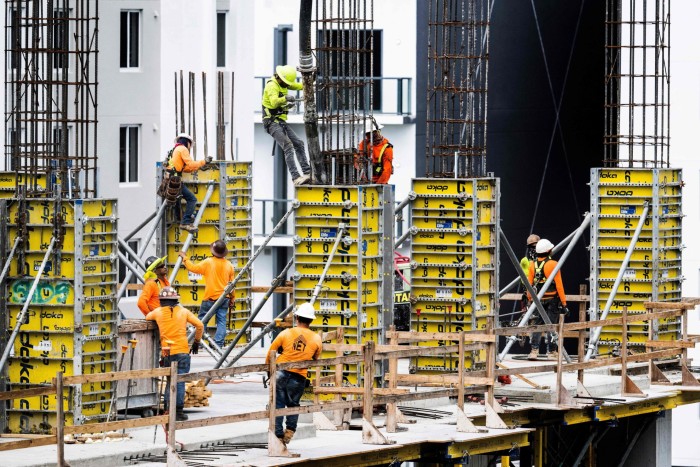
Underlying Pérez’s confidence is the belief that Miami has fundamentally changed. The Covid-era influx of wealthy arrivals has paired with a burgeoning cultural and civic scene to give the city a heft that it previously lacked. Miami is no longer a seasonal place governed by the mood of northern tourists or capital ebbs and flows from Latin America. Now, says Pérez, it is a “permanent” city.
“We’ve become a centre of culture, a centre of business, a centre of finance. We’re seeing huge moves by companies like [hedge fund] Citadel and [founder] Ken Griffin,” says Pérez. “Many other similar firms are either fully moving to south Florida or at least putting major regional headquarters in south Florida. That produces a lot of employment.” He adds: “They’re here to stay.”
Miami’s cultural season kicks into gear in the coming week with the annual Miami Art Week and Art Basel Miami Beach. The urbane Pérez, who still sports a necktie in subtropical Miami, has done as much as anyone to nurture that scene. A passionate collector of Latin American art, he donated $40mn to the Miami Art Museum, which was subsequently rechristened the Perez Art Museum Miami. He has also founded a private museum, Espacio 23 and supports artists and arts education, among other causes.

Pérez’s bullish outlook for Miami is an article of faith among the property developers propelling a historic era of growth in south Florida. The city has a manic feel, with cranes and building sites in all directions and ambitious newcomers eager to stake their claims.
Such confidence may well be informed by Pérez’s past experience — but could also be another case of the boom-time euphoria that almost broke him in the past. For the city, and the many investors making the same wager, the consequences may be enormous. They are betting that low-lying Miami, which faces the long-term threat of rising sea levels, is the new high ground for a commercial real estate world that is still mired in crisis.
At the moment, the market is hard to read. With the sharp rise in interest rates, the number and value of sales has plummeted. But prices are still inching up, if not at the same vertiginous rate as the recent past. According to appraiser Miller Samuel, the median price for a Miami Beach condo rose 4.5 per cent in the third quarter from the same period a year earlier. The number of sales dropped 13.8 per cent. For luxury condos, the median price rose 11.4 per cent on a yearly basis but dropped 2.5 per cent on a quarterly basis.
“This is only the second inning, I’m telling you. Miami is embryonic,” says Marc Roberts, who has secured financing for two luxury towers inspired by his risqué E11even nightclub in downtown Miami, alongside 350,000 square-feet of retail space. The south Florida condo market, Roberts notes, recovered from the 2008 crisis faster than doomsayers predicted. “We haven’t been boom-and-bust in a long time,” he says.
He and others are steeled by Griffin, Miami’s man of the hour, who in November punchily predicted that the city might one day overtake Wall Street as a financial capital.
A rare and persistent bear in the Florida property world is Peter Zalewski, founder of Condo Vultures, which helped to broker sales of distressed condominiums in the 2008 aftermath. “Many would say we’ve already peaked. Now whether [the market] falls — that’s the question,” Zalewski says. “I think most people would acknowledge it’s no longer a buying frenzy.”
For pessimists, one worrying sign was the failed deal for the old Miami Herald headquarters. In April, developer Terra agreed a record $1.2bn purchase of the waterfront site. It has since pulled out, apparently unable to secure financing.
Still, Pérez and others cite reasons beyond employment growth to justify their belief that their market has become more stable. Among them are changes to the way that Florida developers finance their projects. In the pre-2008 frenzy it was common for condominium buyers to put down 20 per cent of the purchase price on a building that did not even yet exist. As values soared, that equity might pass through the hands of a half-dozen speculators before an eventual closing.
Nowadays, the standard is more like 30 per cent down and another 20 per cent by the time the developer breaks ground on the building. That provides more money to fund construction. In theory, it should also reduce speculation by making it more costly for buyers to walk away in the event of a downturn.
Pérez was one of the pioneers of this arrangement — common in Latin America — after he discovered that he could not find a bank willing to make a construction loan for a condo he wanted to build in Hollywood Beach, just north of Miami, after the crisis. The bigger downpayments also help to offset lenders’ moderation.
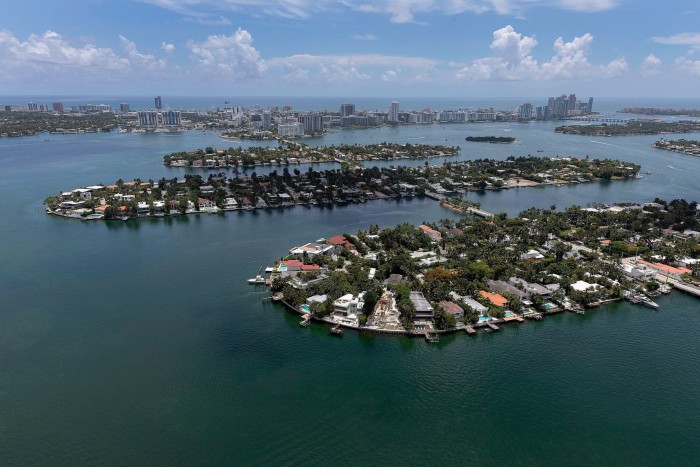
“In the past, there was much greater leverage than there is today. So developers could finance 90 per cent. Today, you get a 65 per cent loan, you’re pretty lucky,” Pérez said. With less leverage, he and other developers would be better able to ride out a storm.
Meanwhile, condo buyers no longer vanish during the summer months. “We’re getting buyers during the whole year,” Pérez reported. “And I don’t think this changes at all. I think it grows.”
Fleeing Cuba
For Pérez, 2008 was not his first reversal of fortune. That was the Cuban revolution. He was actually born in Argentina, where his father was running the Latin America division for pharmaceuticals company Eli Lilly. The family returned to their native Cuba after Jorge’s grandfather died. Then came Fidel Castro. Pérez’s parents supported him at first — only to lose everything.
“They did not think that the revolution was going to be what it ended up being,” Pérez recalls. The family fled to Colombia, where Pérez had an uncle. Lessons about risk and the illusion of stability are haunting.
“If you come from a family in which your mother has never worked because she had lots of graduate degrees and a chauffeur, and she lost everything — including her wedding ring — coming out of Cuba, and had to get two jobs in order for us to still be going to the best private schools. Does that affect you? Yeah,” Pérez says. “Is that ingrained in my mind? Absolutely. I can lose everything any time.”
Rare among dispossessed Cuban Americans, Pérez is a liberal Democrat. He accompanied President Obama on his historic trip to the island in 2016 during a shortlived thaw between Washington and Havana. “We thought we were going to have democratic change in Cuba . . . [But] I think the Cuban government rapidly saw that if they let this new capitalism come into Cuba that they were going to lose power.”
His first encounter with Miami was underwhelming. He visited to study at Dade Junior College (now known as Miami-Dade College) in the late 1960s. The city was then, as he puts it, “a cultural wasteland”. He later returned to work in the city’s planning and economic development office after a scholarship helped him to earn a masters degree in urban planning from the University of Michigan in 1976.
“I used to say, at 5 o’clock, you could go to Flagler, which is our main street, and shoot a machine gun and you would only hit a homeless guy if he were standing up because everybody would leave Miami after 5 o’clock,” he recalls. “You couldn’t find a restaurant at night.”
But, for an urban planner concerned with reversing the dominance of suburbs, Miami offered a fresh canvas. Unlike New York or Chicago, it was not already built.
In 1979, he switched to the private sector, founding the Related Group with Stephen Ross, a fellow Michigan alum, whose Related Companies (not to be confused with Related Group) built New York’s massive Hudson Yards development. They initially focused on affordable housing and then progressed to rental apartments and, eventually, condominiums.
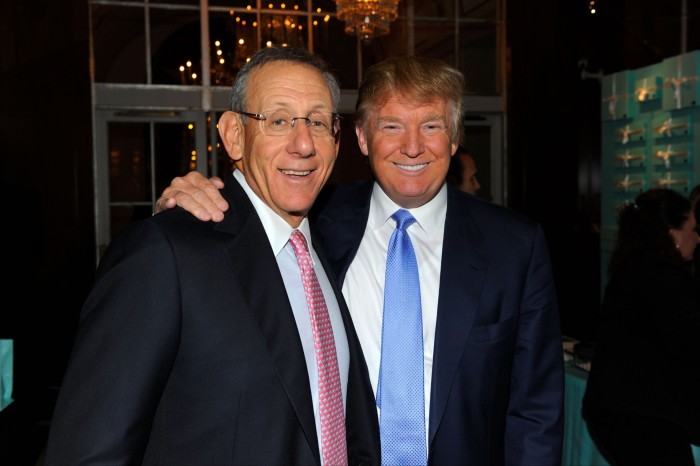
Related has always emphasised Pérez’s love of art and architects. But a big part of its cache is a reputation for what one observer called “machine-like efficiency” in a market known for its share of hustlers and charlatans. They do not drag out negotiations and they are willing to leave money on the table.
“They know what we deliver,” Pérez says of his buyers, many of whom are repeat customers. “When you’re buying a condominium, remember, you’re putting a lot of money at risk from the very beginning and you want to put it in a place with a company that you know has never failed to deliver a building. Never, ever, ever.”
To Iris Escarra, a lawyer at Greenberg & Traurig, who specialises in land-use issues, Related’s reputation has become its own competitive advantage. “They’re homegrown,” she says, as compared with the legion of New York developers who have moved to Miami. “So they know this market. Sometimes they create the market.”
Pérez, for example, is credited with transforming an overlooked section of South Beach below 5th Street. He built many of the residential towers that have elevated Brickell, Miami’s densely packed financial district. He was also the first developer, in 2001, to venture north of the Miami River to build in what was then a moribund downtown.
“Downtown was terrible — downright scary at the time,” Gary Saul, another Greenberg lawyer who leads the firm’s condo practice, recalls. “He saw it. No one else saw it — and he made it happen.”
At the time, Pérez says, “everyone thought I was crazy”. So many Florida lenders passed on that project, known as One Miami, that he ended up going to Brooklyn for financing.
A near-death experience
When the financial crisis arrived, Pérez was upended. “We knew that there was going to be a drop. But we didn’t know that the drop was going to be so extreme and so rapid,” he says.
Among many unforeseen complications was that Related’s loans had been syndicated. So, instead of dealing with 10 major lenders when things went awry he had to negotiate with 80 — many strangers, and each with the power to block a deal. There was much talk in Florida of Related’s demise.
In a meeting that has taken on the aura of legend, Pérez at one point called his lenders together and offered to hand back the keys to his many properties — essentially daring them to take them over as opposed to working with him to restructure the loans.
“It was a very, very difficult negotiation with 80 banks and trying to convince every one of them to give me the opportunity to deliver the buildings and pay them back — pay them 100 per cent of whatever the buildings did without me making one penny,” Pérez recalls. He lost one property, the Icon Brickell. He also ended up putting hundreds of millions of dollars of his own money into others to recapitalise them. “We lost a lot of money,” he says.
Within the crisis, though, were also the seeds of Related’s revival. Banks were dumping properties all over the country at deep discounts. A shopping centre that cost $300 per sq ft to build could be had for $20 per sq ft. “Insane numbers,” Pérez recalls. “It didn’t take a genius to say, ‘Wow, this has got to change!’ So I called a few friends, put in a lot of my own money, and began buying distressed assets around the country. And immediately, when the country turned around, we sold those at a very large profit.”
That refilled Related’s coffers. It also allowed Pérez to begin buying up land all over Florida on the cheap, much of it waterfront. “It gave me a head start with other people when Florida bounced back. And that’s when we started doing a large number of condominiums again that sold extremely well and put us back into the picture,” he said. “When they say, ‘It’s location, location, location’ in real estate. I say, ‘No, it’s really timing, timing, timing.’”
One example is a three-acre lot at 1400 Biscayne Boulevard in what is now touted as Miami’s arts and cultural district. Related bought the parcel in 2014 for $57mn and began developing a 60-storey condo tower with Auberge Resorts. It shelved the plan three years later as the high-end condo market softened. Because Pérez had bought the land at a low enough price, he was able to bide his time.
Related and a partner, Alta Developers, began marketing a new project on the site last year: the Casa Bella Residences by B&B Italia, a high-end Italian furniture brand. More than 80 per cent of the units are now under contract, allowing the partners to secure a $240mn construction loan from Cain International, an investment firm, in November.
Those two projects offer a useful snapshot of the market. While units at Auberge were priced at $700 per sq ft, those at its successor are selling for more than $1,250 per sq ft, with the penthouses going for $2,000.
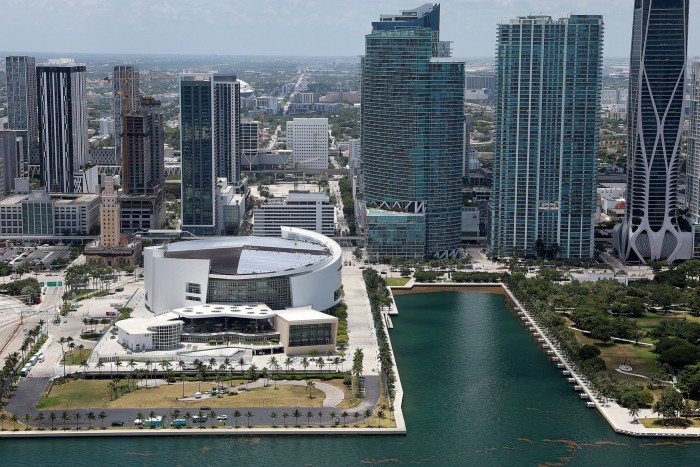
There are still challenges for Related. A side effect of the Florida boom is that construction costs have surged, squeezing margins. “I’m seeing ads for plumbers in Florida for $70 an hour. Two years ago it was $35,” Pérez says. “And also, when contractors and subcontractors have such demand, they won’t negotiate. You either pay them the fees that you want or you’re out of there.”
Florida’s Republican governor, Ron DeSantis, has not helped matters. His threat to check immigration papers at jobs sites prompted many of the workers at a Related project in Jacksonville to flee to neighbouring Georgia. “If they would implement a lot of the things they’re talking about now, the real estate industry would collapse,” says Pérez, a longtime friend and business partner of Donald Trump who has seen their relationship fray over immigration policy.
“As a friend, he was a great friend,” Pérez said, chuckling at the memory. “He was generous. We had great, great, great times together. He was fun to be together with. But I just disagree with him politically, and I expressed that to him and to others.”
It pains Pérez to think what sort of reception America might have granted him today: “They probably would not let me come into this country now. Right?”
Succession dramas
Whatever perils await Related — be it another Florida property bust or an immigration clampdown — it will increasingly be for the next generation to navigate. Nick, the younger son, leads Related’s condominium division. As president, Jon Paul oversees the entire company. Their sister, Cristina, is a social worker. Another brother, Felipe, from Pérez’s second marriage, is still at university.
The brothers first realised something extraordinary was happening when they sold about $1bn in condos in a matter of months after Covid shut down New York and other parts of the country in March 2020.
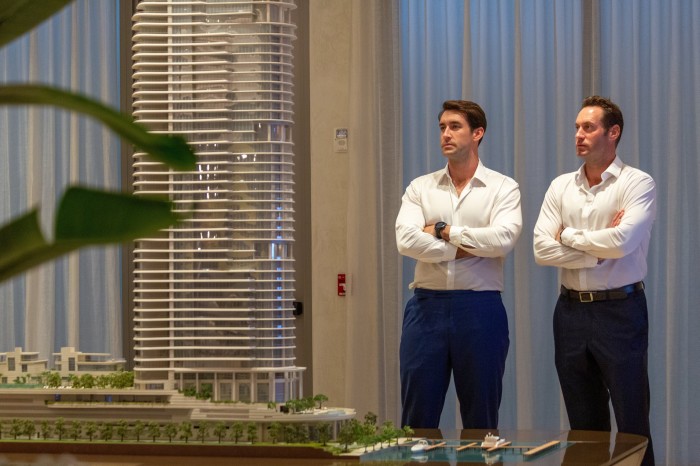
“It feels like every three months or six months there’s some big thing that happens in Miami and — boom! — it blows up again,” says Jon Paul, citing Griffin’s decision to relocate Citadel, the city hosting its first Formula One race and then the arrival of football star Lionel Messi. Amazon founder Jeff Bezos announced last month he was moving to Miami. Of the city’s unique taste for branded buildings, he adds: “Miami is a flashier city than New York . . . It fits well with what Miami means.”
Pérez, who plans to devote most of his time to art and philanthropy, is well aware that children of successful American business leaders often disappoint. He has tried to subvert that by requiring his children to work for at least five years and obtain a graduate degree before joining the family business. (Without a graduate degree, the term is seven years).
Still, Pérez acknowledges that it has been “difficult” for a control freak — unfettered by a board of directors — to relinquish control. He watched the hit show Succession — about a Murdoch-esque media baron whose tyranny and manipulation warps his children — but could only stomach the first season.
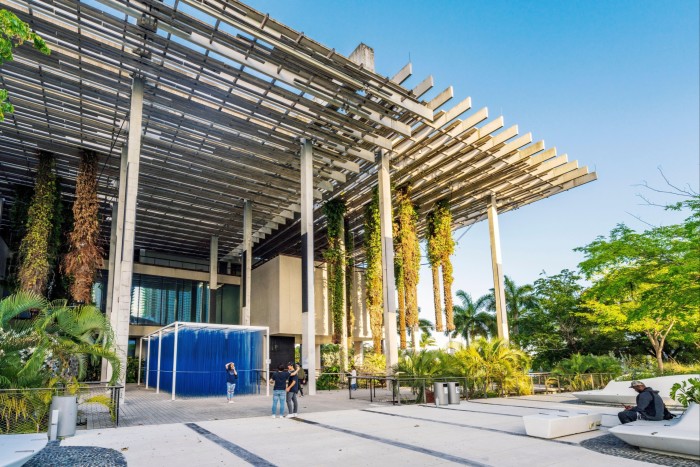
“My kids told me I should see it. I just don’t like the show. I hope that I’m not like that,” he said of the domineering Logan Roy. “I think I’ve learnt how to control myself and the passions, and help them without getting involved so they can learn decision-making the hard way.”
One step he has taken to clear the way for his sons is to dissolve a decades-old partnership with his Ross — whom he calls “my best friend” — and who once owned 25 per cent of his company. That should make it easier for his sons to operate. (It may, some suspect, also free Ross, who has become a major developer of offices in West Palm Beach, to pursue more projects in Florida).
“You have to let go at some point — you die, right?” Pérez mused. “If you die, and you haven’t let go — they aren’t really prepared.”





